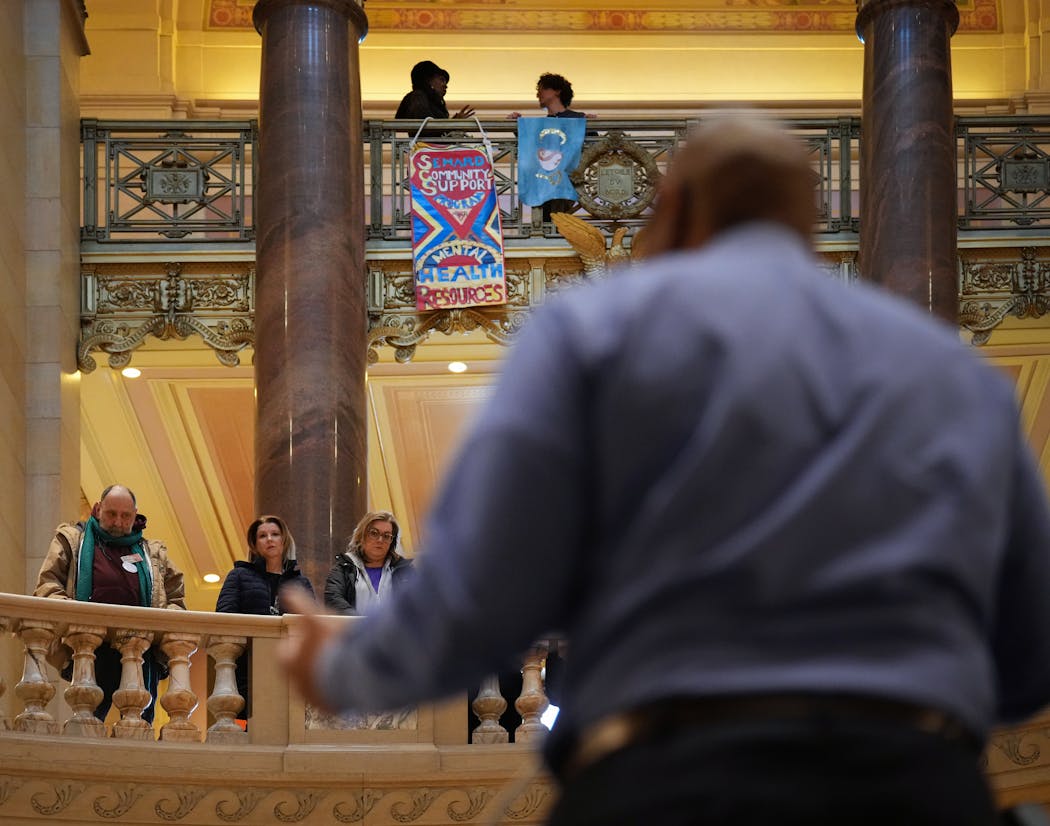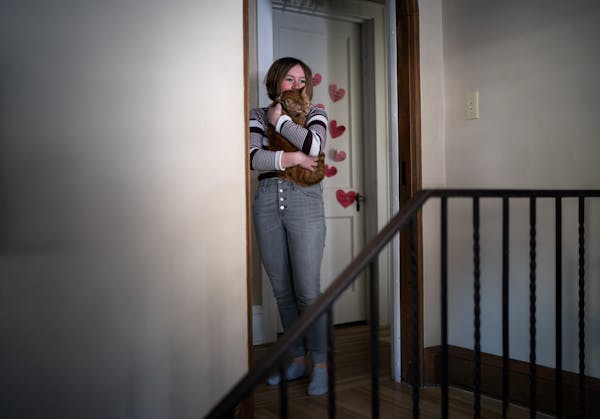Minnesotans are falling through gaps in the state's mental health care system.
Too few students are entering a field that already doesn't have enough providers. People often spend months waiting to see a therapist or get into a residential treatment facility, with dangerous consequences. And an overwhelmingly white workforce often cannot provide culturally specific services.
"It's not even a broken system. It's a system that was never built that has been cobbled together," said Craig Warren, CEO of Washburn Center for Children, which has seen its waitlist triple in recent years. "There are more than cracks ... It feels like when a sinkhole opens up."
He was among the hundreds of providers and advocates who rallied at the State Capitol on Thursday to call for action on 18 mental health-related bills estimated to contain hundreds of millions in state spending.
Mental health concerns have soared across the nation since the pandemic hit, prompting the American Academy of Pediatrics to declare a national emergency in child and adolescent mental health and call for policymakers at all levels of government to act.
In 2022, a year when Minnesota legislators passed little else, Democrats and Republicans agreed to $93 million in mental health spending. But with unrelenting needs and a mammoth estimated budget surplus, legislators are considering an even more expansive slate of mental health bills this year.
"I think this is going to be record investments because we're in a record crisis," said Rep. Jess Hanson, DFL-Burnsville, sponsor of a sweeping bill aimed at improving children's access to mental health services and adding more assistance for families. "We hear stories all the time, 'I can't get care for my kid. I sat in the ER for hours.'"
Hanson's bill doesn't have a price tag yet. Nor do many of the other proposed mental health measures, which range from simplifying regulations and time-consuming paperwork to expanding mental health professional student loan forgiveness to boosting school support staff.
"It will be a lot. But we have underfunded our mental health system for forever," said Sue Abderholden, executive director of the National Alliance on Mental Illness Minnesota, who noted there are also costs if the Legislature doesn't act and emergency rooms continue to be overwhelmed with people who have nowhere else to turn.
Abderholden is one of many advocates and lawmakers predicting a big year for changes to the state's mental health system.
"I've been around for 21 years. I've never heard people talk about mental health and mental illness as much as I have the past 10 months," she said. "There is greater awareness and greater resolve to address this."
There is no simple solution. Legislators emphasized that mental health is tied to housing, workforce and education needs. The Mental Health Legislative Network — an advocacy group representing more than 40 organizations — is hoping they pass a lengthy list of bills, many of which have three, five or even 15 components.
DFL Gov. Tim Walz's proposed two-year budget contains $158 million for student mental health, Lt. Gov. Peggy Flanagan told the crowd at Thursday's rally. Roughly a third of that figure would go to boosting school support staff, such as counselors and social workers.
The administration's budget also includes grant dollars to increase the number of behavioral health providers helping schools, expand mobile crisis service centers and train people to offer culturally-informed mental health support to young people.
But for many service providers, increased medical assistance reimbursement rates are their top priority.
The payment rates to behavioral health and substance abuse treatment providers are not sustainable, said Ashley Kjos, CEO of Woodland Centers, a community mental health center that serves rural communities in west central Minnesota. The state is currently studying the issue and legislators have proposed bills to temporarily boost rates while the study takes place.
"We have been underpaid for decades. It is time for us to get paid what we are worth," Kjos said. "If we do not get these rates fixed we are going to have more centers closing."
Kjos said rate increases would allow places like Woodland Centers to pay higher wages, which could help them attract and retain workers.
The number of people entering the mental health field hasn't kept pace with retirements and departures of burnt-out employees, she said. Woodlands used to have a handful of job openings at a time. Now they have at least 15 unfilled positions, Kjos said, and more than 100 people are on their waitlist for therapy services.
However, workers at nursing facilities and others are also seeking rate increases this year.
Rate hikes require ongoing spending, noted Rep. Heather Edelson, DFL-Edina. And while the state's surplus is projected at $17.5 billion, nearly three-quarters of that money is one-time cash.
"There are a lot of competing factors here at the Capitol this year," Edelson, who is helping push several mental health bills. "I'm really confident that we get some good stuff. Not all of it, but a lot."



